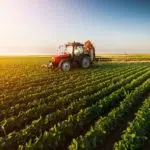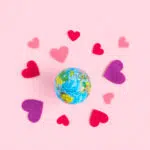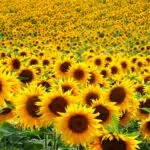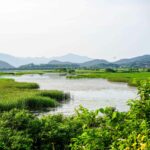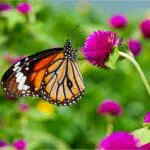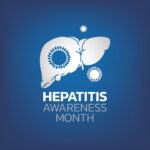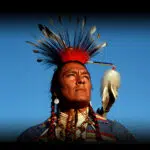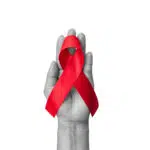American Wetlands Month is annually celebrated in the month of May to raise awareness of the ecological, social, and economic importance of wetlands across the nation. It falls from May 1 to May 30. If you didn’t know this, almost one-third of our country’s endangered species survive in the wetlands. And their role doesn’t end here! Besides being a wildlife defender, wetlands also protect us, humans, from natural disasters. If not for wetlands, massive portions of our land would have been devoured by the oceans. They are also a great source of water storage and purification. Guess where all the urban pollutants go to keep our cities clean? The least we can do to say thanks to our wetlands is to help conserve them in our little ways. Be a volunteer and raise awareness about their destruction. Starting today!
History of American Wetlands Month
American Wetlands Month saw its inception in 1991. The Environmental Protection Agency (E.P.A.) and its partners across various sectors brought it into action to acknowledge the value of wetlands as a natural resource. Ever since E.P.A. has taken the responsibility to conduct adequate research and spread the word through regional and national conferences. The people working and participating in these events are primarily tied to wetland conservation and research. They include educators, non-profit groups, scientists, researchers, and public interest communities, to name a few.
A major highlight of this annual celebration is the National Wetlands Awards, sponsored by the Environmental Law Institute. They pick out individuals every year and reward them for their outstanding effort, excellence, and innovation in wetland preservation. This is a vital step to recognizing the work that goes into the safekeeping of these natural habitats.
E.P.A. also has an exclusive Wetlands Division that focuses on restoring and maintaining our nation’s waters and aquatic resources. In keeping with this goal, the department is actively developing effective and flexible policies and programs. It also imparts sound scientific information to those interested to know about wetlands. Apart from this, it runs campaigns to encourage local and tribal governments to emphasize wetlands protection and restoration in their respective areas.
Despite their constant efforts, this movement cannot be a success without the help of the common citizens. If every citizen takes little steps to raise awareness and work for the environment, it would take much less time to achieve EPA’s goal. Before climate change brings an end to humankind, let’s join hands to put an end to our harmful habits and save the planet. Better late than never!
American Wetlands Month timeline
Congress passes the Migratory Bird Hunting Stamp Act, one of the first legislative decisions to initiate the process of acquiring and preserving wetlands.
A report by the U.S. Fish and Wildlife Service formally uses the term “wetland” for the first time.
The U.S. government passes the Emergency Wetland Resources Act to curtail the loss of wetlands.
As per estimates made by the U.S. Fish and Wildlife Service, an approximation of 90,000 acres of land is added to the country’s wetland inventory.
American Wetlands Month FAQs
What food grows in the wetlands?
Cranberries, water chestnuts, watercress, wild Rice, and many more.
Are wetlands endangered?
Unfortunately, yes! A huge portion of the wetlands has been damaged due to developmental activities, agriculture, grazing of animals, and also the leakage of urban pollutants.
What would happen if there were no wetlands?
Destruction of wetlands can lead to climate crises, degrading water quality, and increase the chances of flooding.
How to Observe American Wetlands Month
Explore a nearby wetland
Locate a wetland nearby to your town or city and go for an exploration. Don’t forget to carry your canoe/kayak, rubber boots, camera, and binoculars!
Learn about wetlands
Get to know about wetlands and how they benefit our environment and life. Reach out to experts or maybe pick up a relevant book. That’s the first step to awareness!
Take action
The best way to celebrate American Wetlands Month is to do something for the preservation and restoration of wetlands. Look for volunteering activities or work with local conservation groups to do your bit for the environment.
5 Interesting Facts About Wetlands
Massive carbon storage
Wetlands can store up to 50 times more carbon compared to rainforests.
Kidney for ecosystems
Wetlands act as a purifier to pollutant water — it’s an affordable and effective way of treating wastewater.
Home to most bird species
More than half of North America’s bird species nest and feed in the wetlands.
Rich in biodiversity
Wetlands are the most biologically diverse ecosystems, we can only find such diversity in coral reefs other than wetlands.
Disaster management
Wetlands can collect and store water, thus curbing the risk of flooding — with heavy storms or tornadoes, wetlands can stop high-energy waves from going further inland and damaging property.
Why American Wetlands Month is Important
It spreads awareness
This month was initiated to educate Americans on the crucial role that wetlands play in upholding ecological balance. We also need to learn how to protect the wetlands, and this month is the perfect time for it.
It benefits our community
Besides being home to a multitude of flora and fauna, wetlands also serve as kidneys for our ecosystem, it prevents flooding and also provide recreational opportunities. Quite an all-rounder they are, don’t you think?
It encourages regulations for wetland protection
The American Wetlands Month urges local governments, communities, and groups to work towards the restoration of wetlands by implementing effective policies and watershed planning efforts. It is time to put more effort into protecting the wetlands.
American Wetlands Month dates
| Year | Date | Day |
|---|---|---|
| 2026 | May 1 | Friday |
| 2027 | May 1 | Saturday |
| 2028 | May 1 | Monday |
| 2029 | May 1 | Tuesday |
| 2030 | May 1 | Wednesday |


